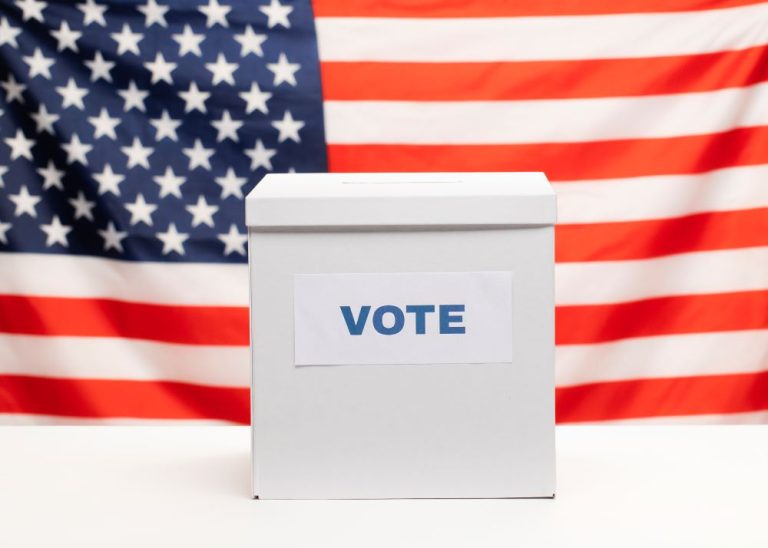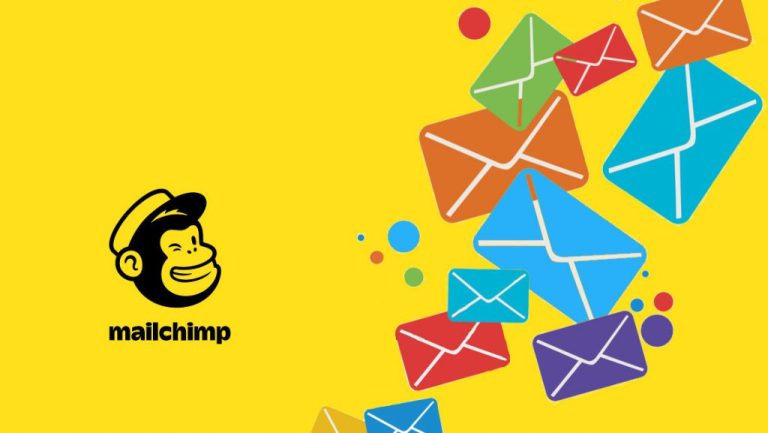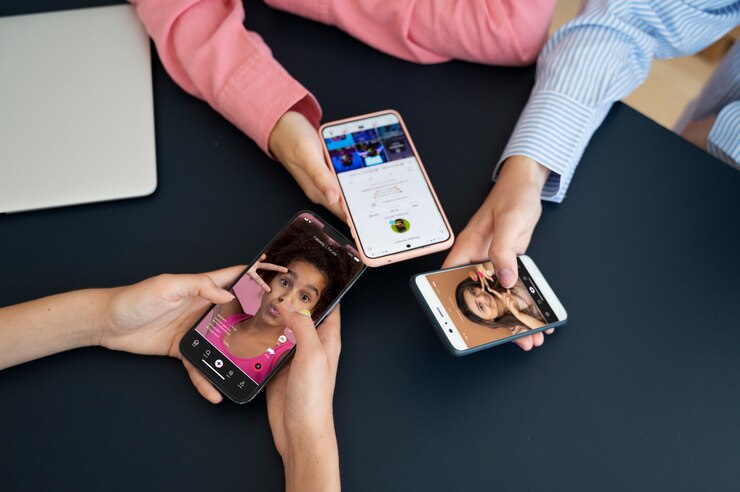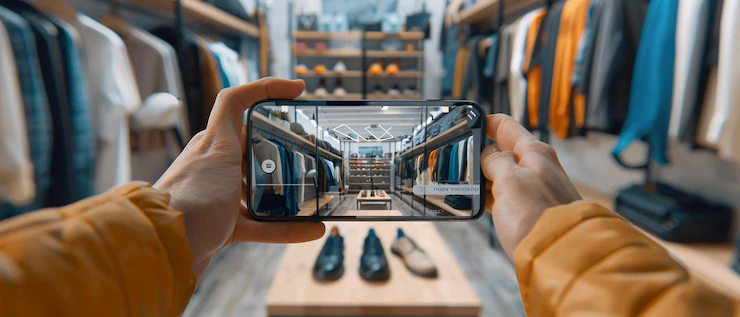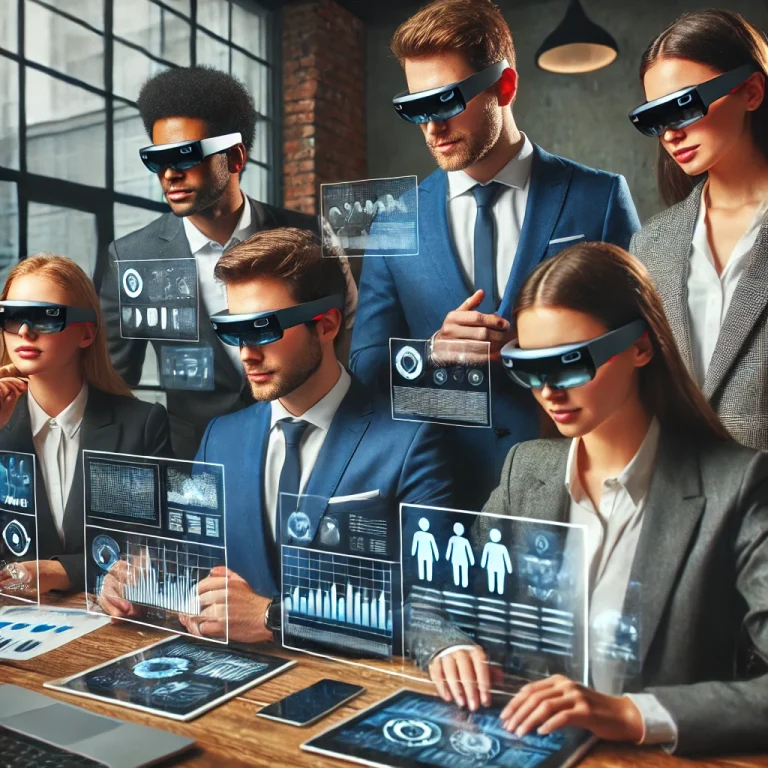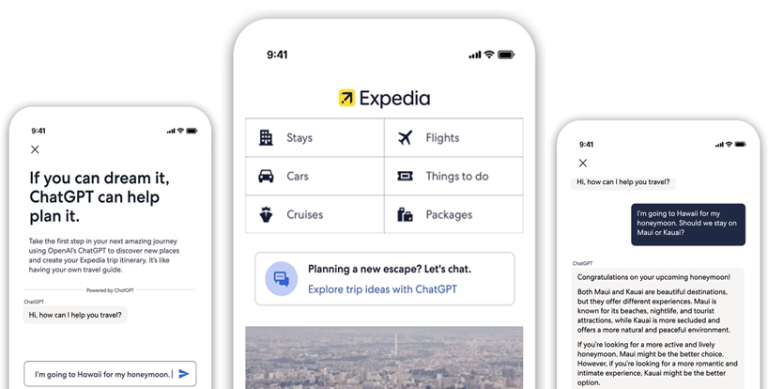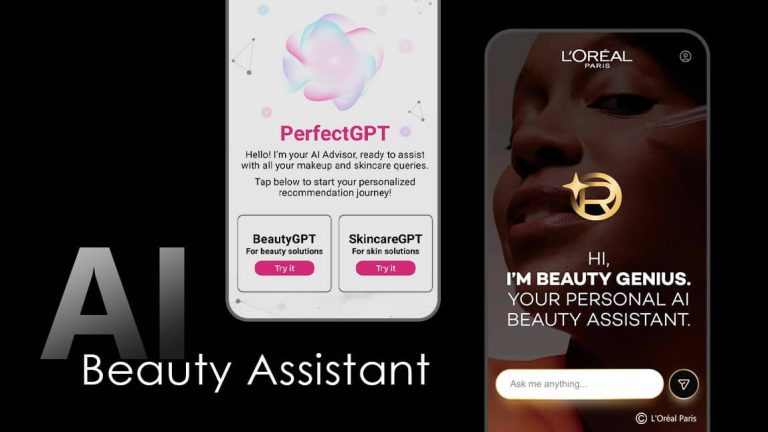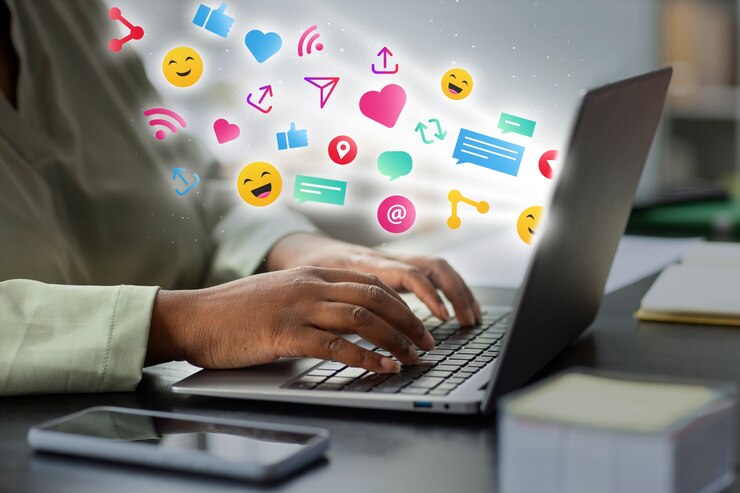In an election cycle dominated by high-profile endorsements from Hollywood elites, one figure stands out as a new breed of influencer: Elon Musk. As the visionary behind companies like Tesla, SpaceX, and X (formerly Twitter), Musk’s influence has shifted from tech and space innovation to the political sphere in a way no other celebrity has. His rise as an instrumental voice in the 2024 U.S. presidential election signals a profound cultural shift—one where Americans are turning to self-made entrepreneurs, not Hollywood stars, as symbols of possibility, resilience, and unorthodox wisdom. Musk’s support for Donald Trump this election cycle has underscored his unique power, proving him to be, perhaps, the most influential figure in today’s social and political landscapes.
Beyond the Inbox: The Unstoppable Relevance of Email Marketing
In a world buzzing with the latest digital trends, the notion that email might be fading into obscurity is a common misconception. However, recent innovative explorations, like the activation from Intuit Mailchimp, reveal a different narrative—one that celebrates the enduring relevance of email in our daily lives and marketing strategies.
As social media continues to evolve, one of the most noticeable trends emerging this year is the shift towards micro-communities and collaborative engagement platforms. Users are seeking more meaningful digital spaces, moving away from public-facing posts intended for broad audiences. At the same time, brands are tapping into micro-influencer marketing, leveraging small yet highly engaged followings to create more authentic interactions. These shifts are not just reshaping how people engage online—they’re transforming social media into a landscape of personal connection, interactivity, and co-creation.
The Appeal of Micro-Communities
Micro-communities, which are small, focused groups built around shared interests, are rapidly gaining popularity. Platforms like YouTube have launched new features, such as community tabs, that function similarly to discussion spaces on Discord, allowing users to participate in more intimate and interactive conversations. Instagram is also promoting niche spaces through pop-up events and tools that encourage smaller-scale interactions. These platforms provide environments where users can have deeper engagement without the distractions of mainstream feeds.
This trend is partly driven by social media fatigue. People are looking for online spaces that offer connection without the overwhelming experience of scrolling through endless streams of unrelated posts. Micro-communities provide a more targeted social experience, catering to specific interests such as travel, lifestyle, or wellness. The personalised feel of these spaces resonates with users who are seeking not only entertainment but also meaningful dialogue.
Micro-Influencer Campaigns: Small-Scale Influence with Big Impact
While traditional influencer marketing still plays a role, brands are increasingly favouring *micro-influencers*—content creators with smaller but highly engaged followings. This shift reflects the value placed on authentic connections. Micro-influencers build trust within their communities by being relatable, fostering meaningful dialogue, and sharing niche interests. Campaigns led by these influencers often result in higher engagement rates compared to those featuring celebrities with millions of followers.
TikTok and Instagram have been pivotal in promoting this trend, with brands encouraging micro-influencers to co-create content that feels genuine. For example, rather than scripted promotions, influencers share real-life moments using the products, inviting followers to join challenges or provide feedback. These collaborative efforts blur the line between brand marketing and community-building, creating an experience that feels organic.
The focus on smaller influencers also aligns with the rise of community-based campaigns. As more brands shift their marketing efforts towards these collaborations, the emphasis is on creating a sense of belonging. Influencers become the bridge between the brand and the audience, making the interaction feel less transactional and more community-focused.
Gamified Engagement and Social Campaigns
In tandem with these changes, brands are also embracing *gamified social media campaigns* to boost user interaction. Instagram and TikTok are at the forefront, introducing playful challenges, interactive polls, and giveaways that require active user participation. These gamified experiences turn engagement into entertainment, encouraging users to tag friends, share posts, or comment to enter contests.
This approach not only increases visibility but also creates a buzz that draws more users into the conversation. The act of participating becomes part of the reward, making users feel like they are contributing to something meaningful. Some brands have even started using interactive tools like augmented reality (AR) filters, further enhancing the immersive nature of these campaigns. TikTok’s Effect House, for example, allows users to create and share AR experiences, which adds a playful twist to product promotions.
Shaping the Future of Social Media
These emerging trends highlight a significant shift in how people use social media. Users are no longer just passive consumers of content—they are becoming active participants in their communities. This shift towards smaller, more meaningful interactions reflects changing consumer expectations, with a growing preference for authenticity, transparency, and personal connection.
For brands, these trends present new opportunities. Businesses can no longer rely solely on polished advertisements and celebrity endorsements. Instead, they need to cultivate genuine relationships with their audience by collaborating with micro-influencers and engaging users through playful, interactive campaigns. Brands that successfully adapt to these changes can foster deeper connections with their customers and create loyal communities that extend beyond the digital space.
Moreover, the integration of commerce into social media platforms makes these trends even more impactful. With TikTok and Instagram offering seamless shopping experiences, users can discover products through interactive content and purchase them within the app. This blend of community engagement and eCommerce not only drives sales but also enhances the overall user experience.
The rise of micro-communities and collaborative engagement marks an exciting new chapter in social media. This trend reflects the growing demand for spaces that foster real connections, shifting the focus from mass broadcasting to personalised interaction. As platforms continue to evolve, the emphasis will be on creating smaller, meaningful digital spaces where users feel seen, heard, and valued.
Brands that embrace these changes by building relationships with micro-influencers, engaging users through gamified campaigns, and fostering community participation will position themselves for long-term success in this evolving digital landscape. Social media is no longer just about reaching the most people—it’s about building genuine connections, one interaction at a time.
In our fast-paced, hyper-connected society, the lines between digital engagement and real-life experiences have become increasingly blurred. While technology has undoubtedly brought convenience and connectivity, it has also contributed to rising stress levels and a sense of disconnection from our surroundings. Enter the concept of a digital detox—a deliberate break from technology designed to help individuals reclaim their mental well-being and foster a healthier relationship with their devices.
As smartphones and social media dominate our daily lives, the need for a digital detox has never been more pressing. Many people find themselves constantly scrolling through feeds, checking notifications, and feeling the pressure to stay connected. This perpetual engagement can lead to anxiety, reduced attention spans, and feelings of inadequacy, particularly when comparing ourselves to curated online personas. A digital detox offers a refreshing opportunity to step back, reflect, and re-establish our priorities.
The benefits of a digital detox are manifold. First and foremost, disconnecting from screens can significantly reduce stress levels. When we are constantly bombarded with information, our brains struggle to process it all, leading to mental fatigue. By unplugging for a set period, whether it’s a weekend or even just a day, individuals can recharge, enjoy the present moment, and engage in activities that promote relaxation and mindfulness. Activities like reading a book, going for a nature walk, or simply enjoying a meal without distractions can help restore a sense of calm and presence.
Moreover, a digital detox encourages more authentic connections with those around us. In a world where face-to-face conversations are often interrupted by buzzing notifications, taking a break from technology can allow us to reconnect with family and friends in meaningful ways. Without the distraction of screens, we can engage in deeper conversations, share experiences, and strengthen our relationships. This sense of connection is vital for emotional well-being and can provide support during challenging times.
For those looking to embark on a digital detox, setting boundaries is key. Begin by designating specific times for device-free activities. This could mean creating a “no phone” zone during meals or setting aside certain hours each day to disconnect entirely. Additionally, consider using apps that track screen time and set goals for reducing usage. These tools can provide valuable insights into our habits and help us stay accountable on our journey toward a healthier digital balance.
It’s also important to remember that a digital detox doesn’t have to be an all-or-nothing approach. For some, gradually reducing screen time can be more sustainable than an abrupt disconnection. Start with small changes, such as limiting social media use or designating specific times to check emails. Over time, these adjustments can lead to a more balanced lifestyle and a healthier relationship with technology.
As more individuals embrace the concept of a digital detox, various retreats and programs have emerged, offering structured environments for unplugging. These retreats provide a space for participants to disconnect from their devices while engaging in activities like yoga, meditation, and nature exploration. Such immersive experiences can foster a sense of community and support, allowing participants to share their journeys and insights with others who are also seeking a break from the digital noise.
In a world where technology is an integral part of our lives, a digital detox can serve as a powerful reminder of the importance of balance. By intentionally stepping back from our devices, we can reclaim our time, nurture our mental health, and cultivate deeper connections with ourselves and those around us. As we move forward, embracing moments of disconnection may be the key to thriving in a hyper-connected world. In this digital age, taking the time to recharge and reconnect can ultimately lead to a more fulfilling and meaningful life.
In recent years, augmented reality (AR) has emerged as a transformative force in the marketing landscape, offering brands an innovative way to engage consumers like never before. Unlike virtual reality, which creates entirely immersive digital environments, AR overlays digital elements onto the real world, allowing users to interact with products and experiences in a context that feels familiar and relatable. This unique blend of the digital and physical has captured the imagination of brands and consumers alike, revolutionising how marketing strategies are conceived and executed.
One of the most compelling aspects of AR is its ability to create memorable and engaging experiences that resonate with audiences. Brands are no longer limited to traditional advertising methods; instead, they can create interactive experiences that encourage consumers to participate actively. For instance, Australian beauty brand L’Oréal introduced an AR feature in its app that allows users to try on different makeup looks virtually. This innovative approach not only enhances the shopping experience but also empowers consumers to make more informed decisions, leading to increased satisfaction and reduced return rates. Such applications highlight how AR can bridge the gap between the digital and physical realms, providing a seamless experience that enhances customer engagement.
Retail giants have also recognised the potential of AR to revolutionise their in-store experiences. IKEA, for instance, has developed an app that lets customers visualise how furniture will look in their homes before making a purchase. By simply pointing their smartphone at an empty space, users can see a virtual piece of furniture in their actual living environment. This capability not only aids in decision-making but also creates a sense of excitement and connection with the brand. For Australian consumers, this means they can make purchases with confidence, knowing that what they see on screen can be realised in their homes.
Beyond retail, AR is making significant strides in the tourism and hospitality sectors. Destination marketing organisations are increasingly using AR to enrich visitors’ experiences. Imagine walking through the stunning landscapes of the Australian outback while using your smartphone to see historical figures and events unfold right before your eyes. This blending of history and reality can deepen a tourist’s understanding and appreciation of the places they visit. For example, apps that provide AR-guided tours of iconic locations, such as the Sydney Opera House, can bring stories to life, enhancing the overall experience for both local and international visitors.
Moreover, AR can foster a sense of community and connection among consumers. Brands can create interactive campaigns that encourage social sharing and collaboration. A notable example is the Pokémon GO phenomenon, which not only captivated players but also drove foot traffic to businesses that hosted in-game events. Australian cafes and shops reported increased patronage during special AR events, demonstrating how gamification combined with AR can be a powerful marketing tool. Brands that harness this potential can build stronger relationships with their audiences, turning casual consumers into loyal advocates.
As technology advances, the barriers to entry for implementing AR in marketing strategies continue to diminish. With the proliferation of smartphones equipped with advanced cameras and AR capabilities, even small businesses can leverage this technology to engage their customers in meaningful ways. Creating an AR experience no longer requires a massive budget or extensive technical expertise; there are numerous user-friendly platforms available that allow brands to develop their AR campaigns quickly and effectively. This democratisation of AR technology opens up exciting possibilities for businesses of all sizes to innovate and stand out in a crowded marketplace.
However, as brands embrace AR, they must also consider the importance of thoughtful implementation. An effective AR experience should not feel gimmicky or intrusive; rather, it should enhance the brand narrative and provide genuine value to consumers. Brands need to be mindful of user experience, ensuring that AR applications are intuitive and seamlessly integrated into the overall marketing strategy. By focusing on authenticity and meaningful engagement, companies can avoid overwhelming consumers and instead foster positive interactions.
In conclusion, augmented reality is undeniably a game-changer for immersive brand experiences. Its capacity to blend the digital and physical worlds offers brands a powerful tool for engaging consumers in ways that were previously unimaginable. As more businesses recognise the potential of AR, we can expect to see a surge in innovative applications that enhance customer experiences across various industries. For Australian brands looking to stand out, embracing augmented reality not only provides a competitive edge but also paves the way for deeper connections with consumers, ultimately reshaping the future of marketing in an increasingly digital world. The future is bright for brands willing to explore the uncharted territories of augmented reality, and those who do may just find themselves at the forefront of a marketing revolution.
In the dynamic world of retail, few names resonate as strongly as Kogan. Founded by Ruslan Kogan in 2006, this Australian e-commerce sensation has transformed how we shop for electronics and home goods. What truly sets Kogan apart is its innovative use of artificial intelligence (AI), which has become integral to enhancing customer experiences and streamlining operations in an increasingly competitive market.
Ruslan Kogan embodies the entrepreneurial spirit, starting with a simple yet powerful vision: to offer quality products at affordable prices. From the outset, he recognised the immense potential of technology to disrupt traditional retail models. By embracing AI, Kogan positioned his business at the forefront of the digital retail revolution. This forward-thinking approach is a hallmark of successful entrepreneurship, demonstrating how a keen eye for innovation can create opportunities where others see challenges.
At Kogan.com, AI algorithms work tirelessly behind the scenes, analysing customer data to create personalised shopping experiences. This commitment to understanding consumer behaviour means that if you frequently purchase tech gadgets, you’re likely to receive tailored recommendations and special deals that make your shopping experience not only relevant but also enjoyable. Such personalisation fosters a sense of connection between the brand and its customers, encouraging repeat visits and purchases.
Dynamic pricing is another clever tactic employed by Kogan. By utilising AI-driven models, Kogan.com adjusts prices in real-time based on factors such as market demand, competitor pricing, and inventory levels. This ensures that customers are always receiving the best possible deal while allowing the business to maximise its profit margins. The ability to respond quickly to market fluctuations is vital for maintaining a competitive edge, and it’s a strategy that even small retailers can adopt to enhance their own offerings.
Moreover, Kogan.com harnesses predictive analytics to manage inventory effectively. By forecasting which products will be in demand, particularly during busy shopping seasons like Black Friday or Christmas, the company ensures that the right stock is always available. This proactive approach minimises the risk of stockouts and excess inventory, which can severely impact profitability. For entrepreneurs, mastering inventory management is a critical skill that can significantly influence overall success and operational efficiency.
Customer service at Kogan.com is enhanced through the use of AI-powered chatbots, which provide instant support for inquiries at any hour of the day. These chatbots are programmed to handle a wide range of questions, from product availability to shipping details, allowing the team to focus on more complex customer needs. This level of service not only boosts customer satisfaction but also fosters brand loyalty, turning one-time buyers into repeat customers who feel valued and understood.
The impact of Kogan’s AI-driven strategies is evident in the company’s impressive growth trajectory. Kogan.com has attracted a loyal customer base that keeps coming back for more, illustrating how effective marketing and customer engagement can drive sustained success. By leveraging technology, Kogan.com has streamlined operations and fortified its market position against both local and international competitors.
Moreover, Kogan’s commitment to transparency and customer empowerment has also played a significant role in building trust. By providing detailed product information and encouraging customer reviews, Kogan.com creates a community where consumers feel informed and confident in their purchases. This transparency, combined with AI-driven personalisation, establishes a powerful connection that resonates with modern shoppers.
In conclusion, Ruslan Kogan’s journey with Kogan.com serves as a compelling example of how an entrepreneurial mindset, combined with the power of AI, can revolutionise an industry. By focusing on personalised experiences, dynamic pricing, and effective inventory management, Kogan has set a high standard for aspiring entrepreneurs. The takeaway is clear: embracing technology like AI isn’t just for the giants of industry; it’s a vital tool for anyone aiming to thrive in today’s competitive landscape. As you navigate your own entrepreneurial journey, consider how innovation and a strong customer focus can lead to extraordinary outcomes, just as Kogan has demonstrated.
Meta has just dropped a bombshell on the tech world, unveiling its game-changing Orion Augmented Reality (AR) prototype glasses, and the internet is going wild! Is this the iPhone moment for AR? Could these glasses revolutionize marketing as we know it? If you thought marketing was competitive before, strap in—because things are about to get wild.
The Big Reveal: Why Mark Zuckerberg’s Orion AR Glasses Are Turning Heads
Mark Zuckerberg’s latest unveiling at the Meta Connect event is sending shockwaves through the industry, and it’s clear that this isn’t just another gadget. The Orion AR glasses are set to completely disrupt how we interact with our surroundings, blending AI with AR in ways we’ve never seen before. Remember the way Steve Jobs’ iPhone launch changed the game forever? This is Meta’s moment to shine, and everyone’s talking about it!
The glasses aren’t just about seeing things differently—they’re about experiencing life in a whole new dimension. These smart specs layer digital information onto the real world, giving users the power to interact with their environment like never before. And for marketers, this is the jackpot we’ve all been waiting for.
Marketing GOLD: Why Orion Could Make Your Brand Unstoppable
Let’s cut to the chase: Meta’s Orion AR glasses are going to revolutionize how brands connect with consumers. Here’s why:
– Virtual Try-Before-You-Buy: Imagine your customers being able to try on clothes, test out makeup, or see how a new couch fits in their living room—all without leaving their house. That’s the kind of power Orion is putting in your hands. Say goodbye to guesswork and hello to skyrocketing conversion rates!
– Hyper-Personalized Ads (That Aren’t Annoying!): We’re talking next-level personalization here. With AI-driven insights, the glasses will show users ads and content that actually matter to them, right when they need it. Your brand could literally be popping up in front of your ideal customer’s eyes—talk about prime real estate!
– Location-Based Promotions That Work: Got a special offer at your café? Or a flash sale at your store? Orion AR glasses will make sure passersby know about it the moment they’re nearby. It’s the perfect way to drive foot traffic and generate buzz.
Is This the Death of Traditional Advertising?
Let’s be real—traditional ads were already on life support, and Meta just pulled the plug. Orion AR glasses represent a massive shift from passive marketing to active engagement. Billboards? TV spots? Print ads? They’re about to look like relics of a bygone era.
Now, instead of bombarding consumers with one-size-fits-all ads, brands can create tailored, interactive experiences that blend seamlessly into everyday life. It’s advertising that doesn’t feel like advertising—and that’s EXACTLY what today’s consumers crave.
The “Metaverse” Just Got Real – Are You Ready to Dive In?
The hype around the metaverse just went from sci-fi dream to marketing reality. With Orion, Meta is fusing the digital and physical worlds, making it easier than ever for brands to create immersive experiences that keep customers coming back for more. Whether it’s a virtual store that feels like the real thing or an interactive product demo that users can access from anywhere, the possibilities are endless.
Warning: Only the Bold Will Survive
Orion isn’t just a flashy gadget—it’s a wake-up call for every marketer out there. If you’re not ready to adapt, you risk getting left in the dust. So how can you make sure your brand doesn’t get lost in the noise?
– Get Creative with AR Content: Static ads are dead. Consumers want to interact with your brand, and AR is the ultimate playground for creativity. Start brainstorming ways you can use AR to engage, educate, and entertain your audience.
– Leverage AI for Better Targeting: With Orion, it’s all about personalization. Make sure you’re using AI to analyze consumer behavior and deliver the right message at the right time. This isn’t the future—it’s happening NOW.
– Prepare for a New Era of Customer Experience: Consumers expect more, and AR gives you the tools to deliver. Focus on creating seamless, immersive experiences that blend the digital with the real world, and watch your engagement soar.
But Wait, There’s More! Is Orion Just the Beginning?
Meta’s Orion AR glasses are more than just a product—they’re the first step in Meta’s master plan to blend the metaverse with reality. As Zuckerberg hinted, we’re only scratching the surface of what’s possible with AR and AI. The real question is: How far will it go?
Imagine a future where your morning coffee cup displays motivational quotes, your gym weights track your reps in real-time, or you’re getting cooking instructions right on your kitchen counter—all through your AR glasses. It’s not just marketing, folks; it’s a lifestyle.
The Bottom Line: Get Ready to Ride the AR Wave or Get Left Behind
Meta’s Orion AR glasses are shaking up the marketing world, and if you’re not on board, you’re already behind. This isn’t just about staying relevant; it’s about being ahead of the curve. As AR technology continues to evolve, the brands that embrace this new reality will be the ones that dominate their market.
So, are you ready to take your marketing strategy to the next level? The future is here, and it’s staring you right in the face—literally.
Don’t just watch from the sidelines—dive in, experiment, and get ready to transform the way you connect with your audience. Meta’s Orion AR glasses are the game-changer you’ve been waiting for. Now, the ball’s in your court.
Ready to ride the AR wave? Share this article and let’s spark the conversation!
Last week, Expedia unveiled a groundbreaking campaign that harnesses the power of artificial intelligence, redefining the way we plan and experience travel. In a world where personalisation is no longer just a trend but an expectation, this new approach promises to elevate the travel experience by offering tailored recommendations that resonate deeply with individual preferences and behaviours.
At the heart of Expedia’s campaign is a sophisticated AI system designed to analyse a wealth of user data. By examining past travel behaviour, search history, and even social media interactions, the platform can provide customised itineraries, hotel suggestions, and activities that truly match what travellers are looking for. Gone are the days of generic travel packages; instead, Expedia aims to make each journey feel unique and personal. Whether you’re a foodie eager to explore local cuisines, a history buff interested in cultural landmarks, or an adventure seeker on the hunt for adrenaline-pumping activities, the AI takes into account your interests, transforming the often-tedious process of planning into an exciting adventure of discovery.
One of the standout features of this campaign is the integration of an AI chatbot that assists users in finding and booking experiences in real-time. Imagine having a friendly, knowledgeable assistant available 24/7 to guide you through every step of your journey. This chatbot can answer questions, provide recommendations, and even help you adjust your plans on the fly. If you suddenly decide you want to swap a museum visit for a last-minute beach excursion, the chatbot can quickly offer nearby options that suit your newfound whim. This interactive element adds a layer of convenience that modern travellers crave, making it easier than ever to create an itinerary that suits their evolving preferences.
But what truly sets this campaign apart is Expedia’s use of predictive analytics. This technology allows the platform to anticipate user needs and preferences before they even realise, they have them. For instance, if you frequently search for beach getaways or have a history of booking family-friendly resorts, the AI might alert you to special deals on coastal accommodations or highlight new attractions that have recently become popular in your desired destination. This proactive approach helps users feel understood and valued, fostering a deeper connection with the brand. It’s not just about providing options; it’s about crafting a seamless travel experience that evolves alongside the traveler’s desires.
As the travel industry continues to recover from the pandemic, this personalised approach couldn’t come at a more crucial time. Many travellers are looking for meaningful experiences that transcend typical tourist attractions. Expedia’s campaign taps into this growing desire for authenticity, allowing users to explore destinations in a way that reflects their own interests and values. It’s not just about where you go; it’s about how you experience it. This shift towards experiential travel is becoming increasingly important, as consumers seek to create lasting memories rather than just check off items on a list.
The reaction to Expedia’s AI-driven campaign has been overwhelmingly positive, with users praising the ease and efficiency of the booking process. Reviews highlight how the platform not only simplifies travel planning but also enhances customer satisfaction. By leveraging AI technology, Expedia is setting a new standard in the industry, encouraging other travel brands to rethink their marketing strategies and embrace technology in a similar fashion. This innovation positions Expedia not just as a booking platform, but as a trusted travel partner that genuinely understands its customers.
Furthermore, the campaign reflects a broader trend in the travel industry, where brands are increasingly integrating technology to enhance user experiences. From virtual reality previews of destinations to mobile apps that provide real-time updates, technology is reshaping how we interact with travel brands. Expedia’s focus on AI personalisation places it at the forefront of this movement, showcasing how technology can be used to forge deeper connections between travellers and their journeys.
Expedia’s latest campaign is a bold leap into the future of travel marketing. By harnessing AI to personalise the user experience, the company is transforming how people approach travel planning. As consumers increasingly seek tailored experiences that resonate with their unique desires, this innovative approach positions Expedia as a leader in the travel industry. The future of travel is here, and it’s personalised, intuitive, and incredibly exciting. As we look ahead, it will be fascinating to see how this campaign influences not only Expedia’s trajectory but also the broader landscape of travel marketing, pushing boundaries and inspiring new ways for travellers to explore the world.
Last week, L’Oréal unveiled its innovative campaign, the “L’Oréal AI Beauty Advisor,” marking a significant leap forward in the world of beauty marketing. This campaign harnesses the power of artificial intelligence to offer tailored product recommendations, catering to the unique needs and preferences of each customer. By leveraging cutting-edge technology, L’Oréal is not just promoting products; it’s creating a personalised beauty experience that resonates deeply with consumers.
The visuals accompanying the campaign are striking, featuring a diverse range of models that reflect Australia’s rich multiculturalism. These vibrant images not only highlight the products but also emphasise inclusivity, showcasing L’Oréal’s commitment to beauty for all. With a variety of skin tones, features, and styles represented, the campaign ensures that every individual feels seen and valued. This thoughtful design approach fosters a strong emotional connection with the brand, encouraging consumers to identify with L’Oréal’s message.
At the heart of this campaign lies the AI Beauty Advisor, a sophisticated tool designed to analyse users’ skin tones and beauty preferences. By providing tailored suggestions, it transforms the often-overwhelming experience of shopping for beauty products into a more intuitive and enjoyable journey. Consumers can simply input their skin type, concerns, and desired looks, and the AI delivers personalised recommendations that cater specifically to their needs. This level of personalisation is a game changer, as it allows customers to navigate a vast array of products with confidence, making informed choices that align with their unique beauty goals.
The marketing strategy behind this campaign is equally impressive. L’Oréal has adeptly utilised AI to optimise their digital advertising, ensuring that the right messages reach the right audiences at the right times. By analysing consumer interactions and preferences in real-time, the brand can refine its approach and create a more engaging advertising experience. This data-driven strategy not only enhances the effectiveness of their campaigns but also demonstrates L’Oréal’s commitment to understanding and meeting the needs of its consumers.
As the campaign rolls out, early responses indicate a positive reception from consumers, who appreciate the blend of technology and beauty. The interactive nature of the AI Beauty Advisor encourages users to engage with the brand in a meaningful way, making them feel like active participants in their beauty journey. This approach not only boosts brand loyalty but also fosters a community of beauty enthusiasts eager to explore new products and share their experiences.
Moreover, this campaign aligns perfectly with the growing trend towards sustainability and ethical practices in the beauty industry. By leveraging AI, L’Oréal can streamline its inventory and reduce waste, ensuring that products are aligned with consumer demand. This commitment to sustainability not only enhances the brand’s reputation but also resonates with a consumer base that is increasingly conscious of the environmental impact of their purchases.
In an industry where personalisation is becoming increasingly important, L’Oréal’s “AI Beauty Advisor” campaign is a bold statement about the future of beauty marketing. By combining innovative design with advanced technology, L’Oréal is not just keeping up with trends; it’s setting them. As consumers continue to seek more personalised experiences, this campaign could very well become a benchmark for others in the beauty industry.
Looking ahead, it will be exciting to see how this campaign influences the landscape of beauty marketing and the ways brands connect with consumers on a personal level. The integration of AI into the beauty shopping experience is likely to inspire other companies to explore similar technologies, fostering a wave of creativity and innovation throughout the industry.
L’Oréal’s “AI Beauty Advisor” campaign represents a significant milestone in the beauty sector, merging technology and artistry to create a truly personalised experience. By prioritising inclusivity and leveraging AI for tailored recommendations, L’Oréal addresses the diverse needs of its consumers while setting a new standard for beauty marketing. This campaign is a testament to how brands can harness technology to foster deeper connections with their audiences, making beauty more accessible and enjoyable for everyone. As the industry continues to evolve, L’Oréal’s pioneering approach may inspire future innovations, shaping the future of beauty for years to come.
In the past week, the rise of AI-generated content on social media has taken the marketing world by storm, sparking dynamic conversations about creativity and authenticity. Brands are increasingly turning to artificial intelligence to create engaging and relevant content that resonates deeply with their audiences. One standout example is BuzzFeed’s recent series of quizzes generated entirely by AI. These quizzes, cleverly tapping into trending topics and user interests, have gone viral, showcasing how technology can produce shareable content that feels fresh and interactive. Users are drawn in by the enticing questions, and the results often spark lively discussions, making the quizzes not just entertaining but also highly engaging.
Coca-Cola has also embraced the power of AI, experimenting with it to craft unique ad visuals and taglines for their latest campaign. The results were striking, featuring unexpected graphics that captivated viewers and prompted conversations around the brand’s creative direction. The campaign has sparked debate about what constitutes creativity in marketing—can a machine truly understand cultural nuances and emotions, or is it merely mimicking patterns from vast datasets? Coca-Cola’s foray into AI-driven advertising exemplifies how brands can push the boundaries of traditional marketing while still maintaining a connection to their audience.
Kraft Heinz took a different approach by using AI to generate innovative recipes based on current food trends and dietary preferences. They shared these AI-inspired recipes on social media, encouraging fans to explore new cooking ideas that cater to modern tastes. This not only sparked interest among food enthusiasts but also highlighted how AI can inspire culinary creativity, fostering a community around shared interests in food and cooking. By integrating AI into their marketing strategy, Kraft Heinz not only promoted their products but also engaged consumers in a meaningful dialogue about their culinary habits.
The use of AI in content creation is reshaping the landscape of social media marketing in profound ways. While some may question the authenticity of content produced by algorithms, there’s no denying the potential for AI to drive engagement and offer fresh perspectives. Brands are now faced with the challenge of finding a balance between human creativity and the efficiency of AI. This trend invites marketers to rethink their creative processes, blending technology with human insight to connect with audiences in deeper, more meaningful ways.
Moreover, the implications of AI-generated content extend beyond marketing. As brands leverage AI to generate content that feels tailored and personal, consumers are becoming more accustomed to interacting with technology in their daily lives. This shift may lead to increased expectations for personalised experiences across all aspects of digital engagement, from shopping to entertainment. As we move forward, the lines between human creativity and machine-generated content will continue to blur, prompting important discussions about authenticity and connection in the digital age.
In conclusion, the rise of AI-generated content marks a significant turning point in social media marketing. It challenges traditional notions of creativity while opening new avenues for engagement and interaction. As brands like BuzzFeed, Coca-Cola, and Kraft Heinz explore the possibilities of AI, they demonstrate that technology can enhance creativity rather than replace it. The future of social media marketing is undoubtedly bright, with AI poised to play a pivotal role in shaping how brands communicate and connect with their audiences. As this technology continues to evolve, it will be fascinating to see how it influences not just marketing strategies, but also the broader landscape of digital communication and consumer interaction.



